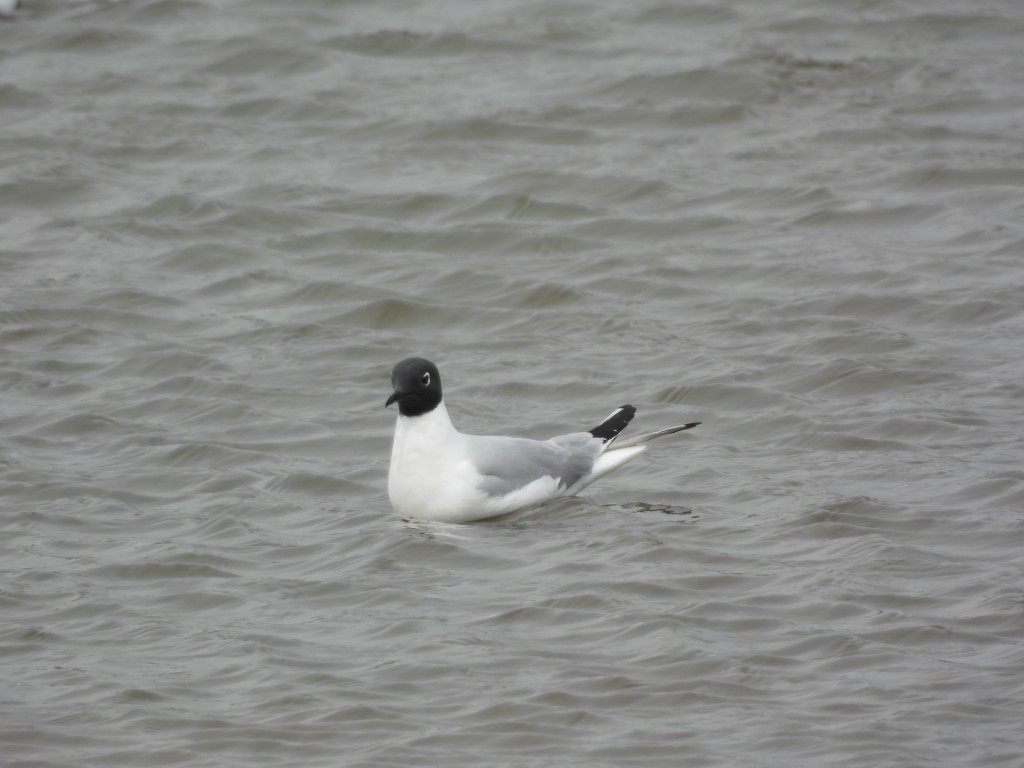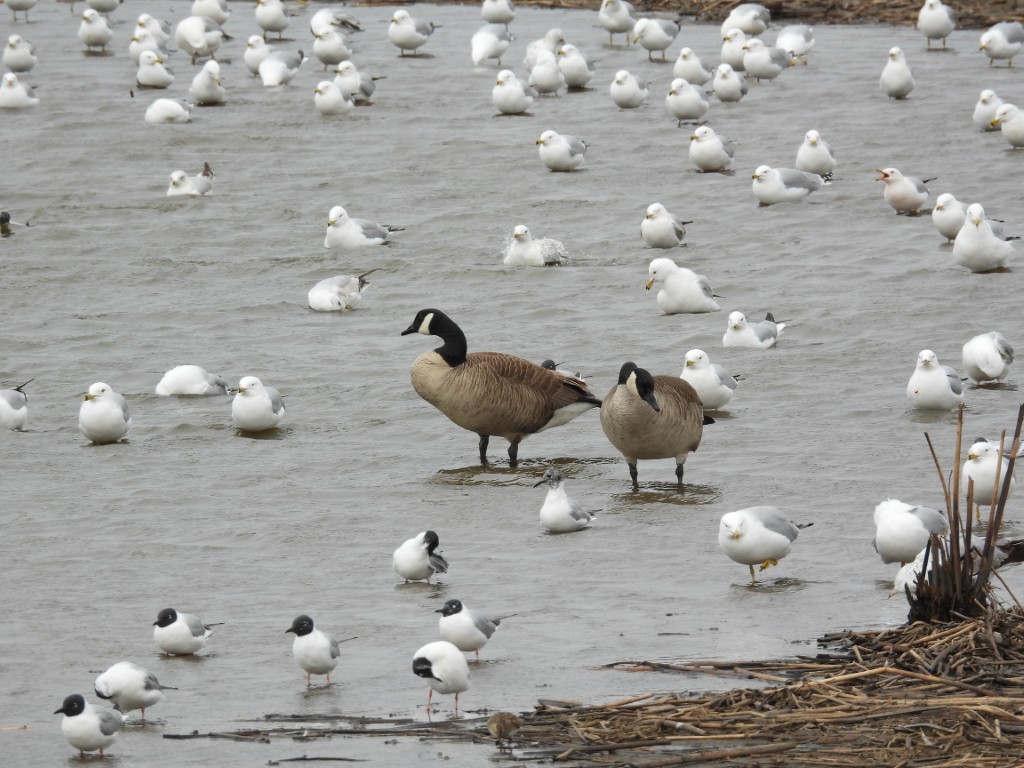I still struggle with identifying gulls, but there’s one species that makes it easy. This is a Bonaparte’s Gull:

In breeding season the adults have black heads. So thankfully they stand out in a sea of gulls!


Bonaparte’s Gulls spend their winters in the southeast United States and along the Atlantic coast. In the spring they migrate through the rest of the United States (including Wisconsin) to get to the boreal forests of Canada for breeding season.
Let me say that again. In the spring they migrate to the boreal forests of Canada. Really? Gulls in trees? Yup, unlike most gulls, they like trees for nesting. They are particularly fond of spruce trees.
This time of year during migration season you can find them in agricultural fields and in ponds in parks. They’ve been spotted in our city this spring, but Jill and I took a 20-minute drive into the country to watch this flock. Someone tipped us off where to find them.

They remind me of penguins even though the only similarity is the black and white coloring.

Here’s a fun fact about Bonaparte’s Gulls from the Cornell Lab of Ornithology: “The common name of the Bonaparte’s Gull honors Charles Lucien Bonaparte, a cousin of Napoleon Bonaparte who made important contributions to American ornithology while an active member of the Academy of Natural Sciences of Philadelphia during the 1820s. The scientific name philadelphia was given in 1815 by the describer of the species, George Ord of Philadelphia, presumably because he collected his specimen there.”
